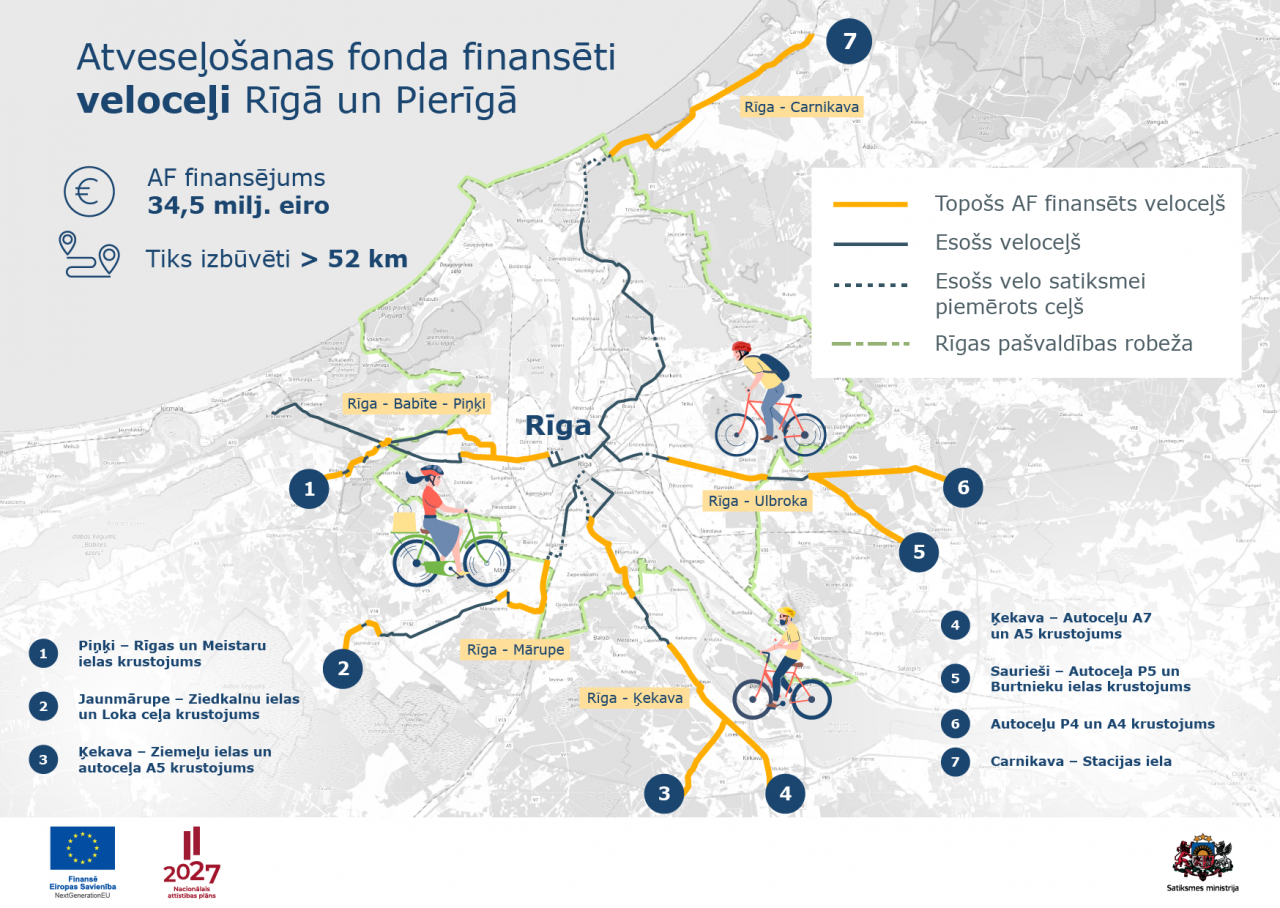On Friday, January 29, the draft Recovery and Resilience Facility (RRF) Plan for Latvia, its objectives, planned structural reforms and investments, as well as further steps in the development of the plan have been discussed in the National Tripartite Cooperation Council.
Prime Minister Krišjānis Kariņš emphasises: "The draft Recovery and Resilience Facility Plan for Latvia has been prepared in accordance with the objectives of the National Development Plan and the recommendations from the European Commission. It is aimed at transforming our national economy, by increasing the competitiveness and productivity. The European Union Recovery and Resilience Facility, or the Recovery Fund, as we call it in a simplified way, ensures additional funding possibilities, for our economy to be able to faster overcome the consequences caused by Covid-19 pandemic."
The meeting was held remotely (online), and during the meeting the Government and the social partners - the Employers’ Confederation of Latvia and the Free Trade Union Confederation of Latvia, other entrepreneurial organisations and representatives of local government organisations - discussed the draft RRF plan prepared by the Ministry of Finance. The participants of the meeting discussed the ways how, by joint effort, to successfully achieve the objectives set by the European Commission (EC) and to solve the challenges of our country in such fields as digital skills, climate change, economics and reduction of inequality.
During the meeting, the parties agreed that the work will continue, in order to enhance the draft RRF plan in cooperation with the social and cooperation partners after receipt of the official opinion from the EC, where it will be assessed by the experts and their comments will be provided as to whether the RRF plan prepared by Latvia can be recognised as appropriate for the fulfilment of country-specific recommendations and reform directions. It is planned that the draft plan would be submitted to the EC following the review thereof in the Government on February 2. At the same time, the MoF undertook to prepare and to submit the content and time schedule for consultations with respect to enhancing the RRF plan for further cooperation with the line ministries and social and cooperation partners.
The RRF funding provides for a significant additional financial support from the European Union (EU) for the purposes of implementation of reforms. In order to efficiently allocate this funding, the structural reforms and investment projects necessary for Latvia must be carefully considered, including them into the national RRF plan. Furthermore, the RRF contributions must be closely linked to the recommendations from the EU Council for the relevant Member State. The guaranteed available funding for Latvia comprises EUR 1.65 billion; therewith, for the time being, the RRF plan has been prepared within the scope of this amount.
The work on introduction of the RRF is being organised in six directions - climate change and sustainability, digital transformation, transformation of economy and productivity reform, health, reducing inequality and the rule of law. Following the EC recommendations, 20% of the RRF funds are planned to be allocated to digitisation and 37% - for achieving climate objectives.
In allocating the funds from the EU Recovery Facility, a single approach is planned to all EU Member States. Namely, national economic recovery plans must, first of all, include the objectives and the necessary reforms for achieving the objectives, investments for the implementation thereof, including as the last particular projects, by which it is intended to achieve the objectives.
The draft RRF plan and infographics in Latvian are available on the EU funds website.
